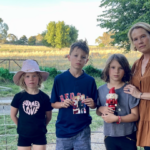Does Circle Sentencing Work?

Circle sentencing is an alternative form of sentencing available to adult Aboriginal offenders.
It is generally used to deal with more serious crimes and often entails full community involvement as well as consideration of traditional Indigenous forms of dispute resolution and customary law.
It directly involves local Aboriginal people and, according to legislation, its aims are:
- To include members of Aboriginal communities in the sentencing process
- To increase confidence of Aboriginals in the sentencing process
- To reduce barriers between Aboriginal communities and courts
- To provide more appropriate sentencing options for Aboriginal offenders
- To provide support to victims of offences by Aboriginal offenders
- To allow of greater participation for Aboriginal offenders and their victims in the sentencing process
- To increase awareness amongst Aboriginal offenders about the consequences of their actions
- To reduce recidivism in Aboriginal communities
The process starts when the magistrate welcomes everyone to the circle and the participants introduce themselves.
The magistrate then explains the function of the circle – it is a court and functions as one – and the guidelines for the system. The defendant and victim both have a chance to comment before the circle discusses the offence, its impact, what can be done to remedy the damage, and the support available to the defendant and victim.
The magistrate summarises what has been said during this time and then determines the sentence. Support groups for both victim and offender are established and a date for review is set before the circle is formally closed.
However, circle sentencing is only available for people who plead guilty. This has led to concerns that some people would plead guilty even if they weren’t, just so that they could have access to the program.
A step forward
Circle sentencing was first trialled in 2002. Since then, more than 1,200 people have completed the programme in 10 locations across NSW including Lismore, Dubbo, Nowra, Bourke, Blacktown and Mt Druitt.
For Aboriginal people, its introduction was hailed as a progressive step forward, with many benefits, such as removing the dominance by the legal professional and legal jargon in the process, full participation by the offender, including facing up to the impact on the victim in front elders and community/family members, and the appointment of an active support group to work with the offender once the ‘sentencing’ has been determined, are the keys to its great success.
The results
The Indigenous website Creative Spirits says Circle Sentencing enables the communities affected to be actively engaged in finding solutions and ensuring that re-offending does not occur. The statistics on the website are also encouraging, showing only 4 of the 50 offenders sentenced in the circle court have re-offended in Dubbo and just 10 out of 37 offenders have re-offended in Nowra.
Now, in the coming weeks, the Bureau of Crime Statistics and Research (BOCSAR) will begin its formal re-evaluation of circle sentencing.
BOSCAR’s first analysis of the program in 2008 involved just 68 participants and concluded that Circle Sentencing failed to reduce recidivism and also raised concerns that the process did not address the root cause of the offenders’ criminal behaviour, such as drugs and alcohol.
AS a result, changes were implemented to the program to specifically deal with the causes of offending, and now 10 years later, with a much larger sample size for BOSCAR to use, the results will be interesting.
BOSCAR chief Don Weatherburn is confident the new results will be ‘in stark contrast’ to the 2008 evaluation.
The need for alternatives to incarceration
With the rate of indigenous incarceration now the highest in the world, there’s an even greater need for assessing alternative initiatives. Particularly given that Indigenous people still die in custody at alarming rates right across the country, despite it being more than 25 years since the Royal Commission into Aboriginal Deaths in Custody.
Many who’ve been working with Circle Sentencing have positive anecdotes to tell – mostly because of the intimacy the circle offers. Courts can be large an impersonal, but in a circle, offenders are challenged by their elders about their conduct and are confronted with their behaviour and required to personally engage with the impact of their crime.
The BOCSAR research will take into account the personal feedback of those people involved in Circle Sentencing – those who witness first hand its effect on reduced re-offending rates and can attest to previous offenders who’ve turned their lives around. The study will also crunch numbers, with a full report due early next year, which will then be used to further shape the programme and hopefully make it available in more areas.






